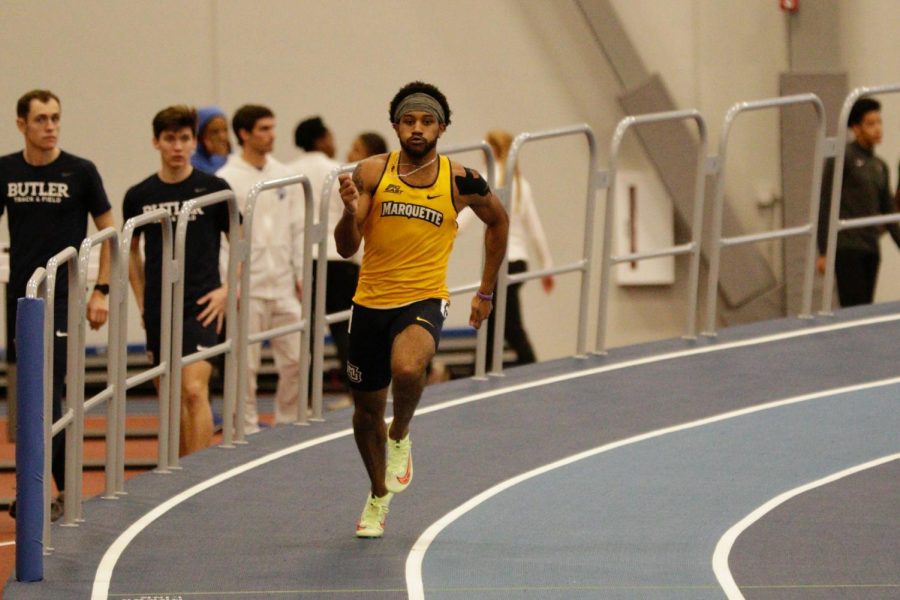As the indoor track season is beginning to move as quickly as a locomotive, the men’s and women’s distance squads will be tasked with being assets to the team during the remaining stretch.
“Everybody is at a different place coming out of cross country and going into the track season, however, we are ready to compete,” senior mid-distance runner Grace Dargiewicz said.
In track and field, the makeup of a team — sprinters, jumpers, throwers and long distance runners — mainly comes from the team’s cross country team from the fall.
With three meets already under their belt in South Bend, Indiana, Chicago and Kenosha, Wisconsin, Dargiewicz said those on the distance squad embrace the simplicity of the transition from outdoors into indoors.
“The transition from cross country to track is theoretically pretty simple,” Dargiewicz said. “It’s laid out for us and we kind of know when we’re going to race if we want to race and what kind of training we’re going to need to be doing or what kind of breaks we’re gonna need to be taking.”
With an abundance of indoor events to compete in, not every member on the team trains for the same event.
During the cross country season, the men’s training might be geared to compete on five to 6.2 mile courses, while the women’s training was targeted at 3.1 to 3.7 miles.
In indoor track, some athletes run as low as the 400-meter dash compared to a senior, who might run in a three kilometer race, which is equivalent to almost two miles.
Senior long distance runner Patrick Burns mentioned while there is an adjustment to the running aspect of competition, there is an adjusting period, to an extent.
“While there might be a difference in the length or distance of a track, it doesn’t really make that much of a difference,” Burns said.
“I’m one of the people that do the long races and there are usually not very long races offered during indoor, so for me, it’s big and there’s less pressure.”
Assistant coach Sean Biren said running in an oval track compared to the competition in wide-open outdoor environments is a tremendous difference.
“It is a gear shift for those kids who race farther down,” Biren said. “You can’t get into an indoor 800-meter race and take those two laps to warm up on an indoor track”.
Due to running on a more open plain for a longer period, cross country runners are used to pacing themselves and timing their positions, while those who run indoor track in the oval become tighter and one mistake can cost an event.
“You don’t have that time to maybe start off in the back and have a long amount of miles to come back and work your way up to the front, especially in the 400, or 600 or 800-meter dash. You have to be with the pack the whole time, and there’s a very small margin for you to make your move,” Dargiewicz said.
Different strategies come into balance when it comes to cross country runners competing on a track.
Burns mentioned that he learned that his moves have to be “deliberate” based on the shape of the track.
“Since you’re turning half of the time, you always being on the inside versus the outside is a huge difference. You don’t want to be putting in all that extra effort,” Burns said.“I’d say it’s a lot more timing focused versus in cross country where it’s when you have the opportunity, you go and it doesn’t make that much difference when it happens.”
At the end of the day, Birren said the distance crew is a part of the full makeup of the program and helps the team embrace being with one another at events.
“We have 92 kids on the team (in the program) and that many kids, sitting up in the stands, screaming and yelling for you, there is definitely a different vibe to indoor,” Birren said.
This article was written by Johnnie Brooker. He can be reached at johnnie.brooker@marquette.edu.


